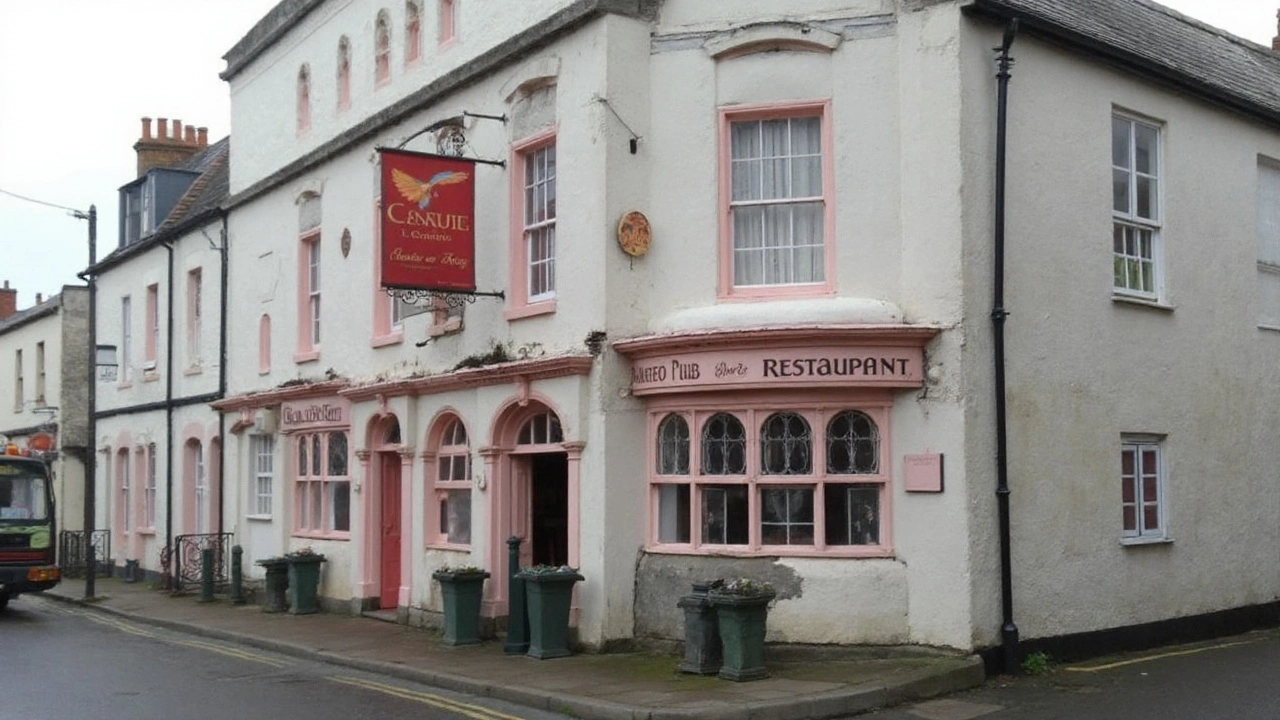A 160-year-old dockside fixture has changed hands for the price of a modest house. The Golden Ship on Cliff Road — once the Ship Launch Inn — sold at auction for £205,000, just above its £200,000 guide. For a building that has watched over Ipswich’s working waterfront since the 1860s, it marks the end of one chapter and the start of another for a site woven into the town’s maritime story. The listing was handled for Keltik Solutions Ltd and included an extra strip of land suitable for parking, a rare bonus this close to the docks.
This is not just any property deal. The Golden Ship sat apart from homes but within earshot of cranes and engines, drawing trade from the yards and workshops that kept the port moving. For decades it did exactly what pubs like it were built to do: look after the people who powered the town’s economy. Today, its sale folds a piece of that working life into the wider redevelopment wave running along the Wet Dock.
A dockside survivor changes hands
Open since the 1860s under its original name, the Ship Launch Inn, the building served generations of dock workers and river trades. For many years it was part of the Tolly Cobbold estate, tied to the Ipswich brewery whose signs once marked pubs across Suffolk. The location was the point: a short walk from the dock front, a world away from tidy terraces. It relied on passing yard workers, shift changeovers, and the steady rhythm of the port.
In the 1970s the place had its golden run. Locals remember pinball, darts, and shove ha’penny packed into lively evenings. It was one of those no-fuss houses where word of mouth mattered more than signage. But drinking habits changed, shift patterns shifted, and the pull of town-centre venues and waterfront bars grew. By the turn of the century, sales were slipping. Despite several management teams trying to steady it, the pub closed in 2010.
After the taps ran dry, the building found a second life as a Chinese takeaway, keeping the nautical nod as The Golden Ship. That kept the lights on until 2018, when the shutters came down again. Keltik Solutions Ltd later put the property up for auction, and the gavel finally fell at £205,000 — a price that reflects both the building’s age and the scope to rework the footprint.
The sale package included an adjacent parcel of land positioned for parking — a practical edge in a tight urban setting. In a waterfront area where space is always at a premium, that extra land can make or break a small residential scheme.

Planning, prospects, and what comes next
The building comes with planning permission already in place for four two-bedroom, two-storey maisonettes. That is a ready-made path for the buyer to follow, and in a district with steady demand for smaller homes, it’s a logical fit. Maisonettes turn a compact shell into stacked living spaces with independent entrances — less lift shafts, more front doors — which can keep build costs and service charges down.
There is also scope to think wider. The auction details point to other options: mixed commercial uses, multiple-occupancy arrangements, or full redevelopment, all subject to planning consent. Each path has trade-offs. Conversions save fabric and character. Knock-down-and-rebuild can squeeze in more units but faces stricter design tests, especially in an area shaped by warehouses, granaries, and old yards. Local planners typically look for schemes that respect scale, deal with parking and access on Cliff Road, manage noise, and address flood risk near the water.
If the buyer sticks with the approved plan, the work is clear: split the structure into four homes, use the extra land to solve parking, and make sure insulation, drainage, and fire safety hit modern standards. The biggest challenge won’t be fancy architecture — it will be stitching old brick and timber to today’s building regs. That’s often where costs lurk: hidden damp behind panelling, uneven floors, or services that need complete replacement.
Set against that, the Wet Dock area keeps changing. Over the last two decades, the waterfront has drawn apartments, studios, cafés, and the University of Suffolk campus, building a cluster of life around the marina. Every fresh project adds residents who want places to live close to the quay. Properties like the Golden Ship sit in the seam between old industry and new neighbourhoods — awkward to convert, rich in character once finished.
There’s a cultural thread here too. Tolly Cobbold’s name once hung over a network of pubs that anchored life in towns and villages across Suffolk. Many have been reinvented; some have gone. The Golden Ship’s switch from public house to takeaway to housing proposal mirrors that broader story. It’s what happens when the work that sustained a pub ebbs away and the area around it is remade for different uses.
For people who remember the rush-hour clatter in and out of the bar, the sale will land with a twinge. Noon pints, darts boards with worn bullseyes, and a shove ha’penny board polished by decades of coins — these are small details, but they carry a lot of memory. They also explain why these buildings matter. Even without a formal listing, they hold a record of how the town worked and played.
What will the new owner do? The numbers suggest an investor-builder or small developer is likely. With consent already granted, the simplest route is to stick with the four maisonettes, use the extra plot for parking, and push a tidy, buildable scheme through technical design. A mixed-use plan — say, a ground-floor workspace with homes above — could also fit, but would need a fresh planning run and a pitch that proves demand.
There are practical hurdles to clear. Access along Cliff Road during construction, deliveries tight to the kerb, and the need for a flood-risk assessment are typical boxes near the water. Noise and vibration from nearby activity also matter, especially if the final units are aimed at families. Expect conditions on materials, brick tones, window styles, and signage removal to keep the street’s look coherent.
Either way, the price point leaves room for a careful rehab. Getting the building weather-tight, replacing services, and insulating to modern standards usually absorbs a fair chunk of budget, but the small scale keeps risk contained. If the buyer moves quickly, design work and building control can run in parallel with strip-out, keeping the programme lean.
So a working house for dockers becomes a test case for measured regeneration. The sale doesn’t just tidy up a derelict corner; it asks a bigger question: how do we keep the waterfront’s history visible while making space for people who want to live by the quay? Whatever rises behind the old facade, the answer will sit in the masonry — and in whether future residents know they’re living inside the story of a former Ipswich pub.
- Opened in the 1860s as the Ship Launch Inn
- Long associated with Tolly Cobbold brewery
- 1970s: popular for pinball, darts, and shove ha’penny
- Closed as a pub in 2010; takeaway until 2018
- Sold at auction for £205,000 with extra land for parking
- Consent in place for four two-bedroom, two-storey maisonettes
